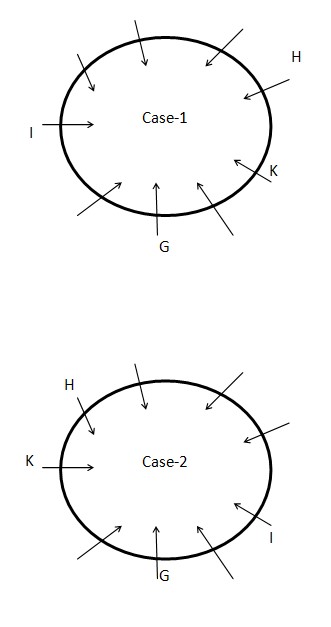Question
What is the position of I with respect to
N? Answer the questions based on the information given below. Nine persons viz. G, H, I, J, K, L, M, N and O are seated in a circular table such that all of them are facing towards the centre, but not necessarily in the same order. The consecutive alphabetically named person doesn’t sit adjacent to each other. One person sits between G and K who sits adjacent to H. Four persons sit between H and I who doesn’t sit adjacent to G.J sits to the immediate right of M. The number of persons between M and I is one less than the number of persons between L and N, when counted from the right of both M and L.Solution
One person sits between G and K who sits adjacent to H. Four persons sit between H and I who doesn’t sit adjacent to G. The consecutive alphabetically named person doesn’t sit adjacent to each other.  J sits to the immediate right of M. The number of persons between M and I is one less than the number of persons between L and N, when counted from the right of both M and L. Hence, cases 2 get eliminated.
J sits to the immediate right of M. The number of persons between M and I is one less than the number of persons between L and N, when counted from the right of both M and L. Hence, cases 2 get eliminated. 
1885 ÷ 64.98 + 7.29 + ? = 69.09
212 + 14 × 23 – 28 × 15 = ?
(22² × 8²) ÷ (92.4 ÷ 4.2) =? × 32
567-4824 ÷ 134 =? × 9
Determine the value of 'p' in the expression.
28 ÷ 22p + 1 = 43
What will come in place of (?) in the given expression.
(15) ² - (13) ² = ?? = 6.25% of 240 + 25 2 + 17 2 – 16 × 17
35% of 840 + 162 = ? – 25% × 300
(7/5) × (3/4) × (5/9) × (6/7) × 3112 = ?
1024 ÷ 16 + 800 ÷ √64 + ? = 200 * 2
Relevant for Exams:


